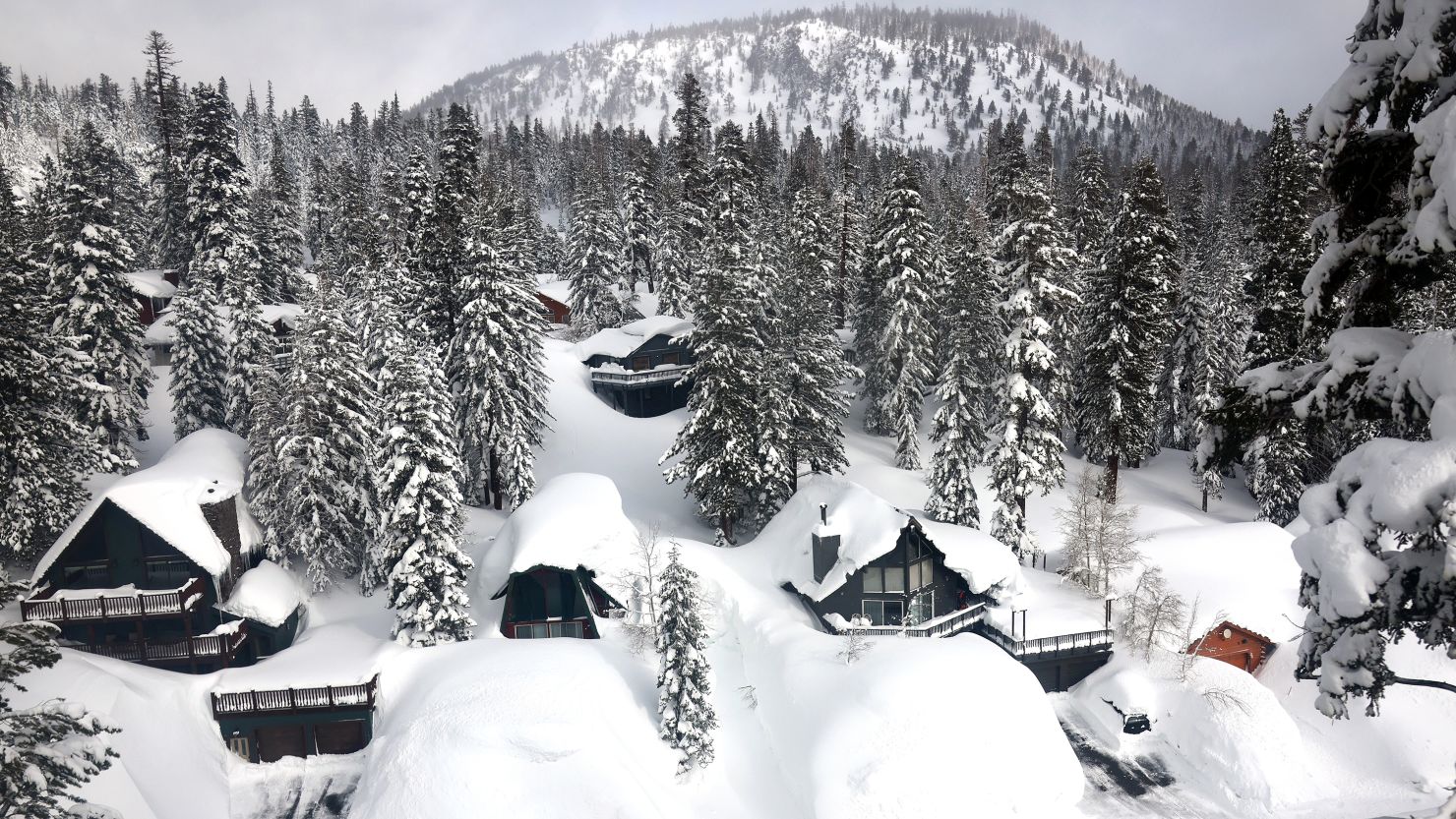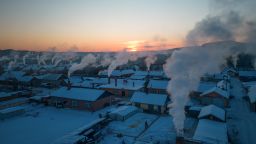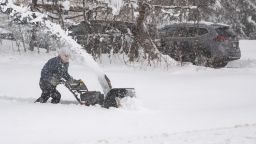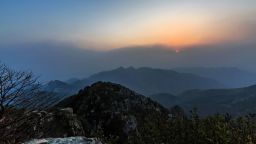Snowfall is declining globally as temperatures warm because of human-caused climate change, a new analysis and maps from a NOAA climate scientist show.
But less snow falling from the sky isn’t as innocuous as just having to shovel less; it threatens to reinforce warming, and disrupt food and water for billions of people.
Climate scientists say the future of snowfall is pretty clear: A warmer world driven by human pollution means precipitation is more likely to fall as rain than snow, all else being equal.
It’s possible in the near term that climate change will cause more extreme winter storms and some years of increased snowfall — like the data shows for the Northeast US — but as global temperature warms, there will be fewer of those years, and eventually we could see snowfall amounts fall off a cliff.
“Eventually the laws of thermodynamics mean that as you keep warming you’re just going to transition more and more of that snow over to rain,” said Brian Brettschneider, a climate scientist with the National Weather Service in Alaska and the brains behind the data analysis in this story. “You can get away with things for a little bit, and it can hide some trends, but overall the laws of thermodynamics will win out.”
Snow also isn’t going to decline linearly, or at a 1-to-1 rate, with rising temperatures, said Justin Mankin, a climate scientist and associate professor of geography at Dartmouth College. Instead, there is more of a tipping point, which would mean that once a certain temperature threshold is reached, “we should expect the losses to accelerate.”
“It means we can expect a lot of the places that haven’t exhibited massive snowfall declines to maybe start to exhibit them with just a little bit more warming,” Mankin told CNN.
There has already been a 2.7% decline in annual global snowfall since 1973, according to Brettschneider’s analysis of data from the European Union’s Copernicus Climate Change Service. The downward trend is particularly notable in the Northern Hemisphere’s mid-latitudes — the middle area north of the tropics and south of the Arctic, where the US and much of the world’s population resides.
The sun is more direct there compared to the higher latitudes, especially during spring and fall when it still snows. The white of snow acts like a car’s sun shade, deflecting sunlight and its heat back to space. Without it, more sunlight is absorbed by the ground, warming the atmosphere.
Less snow falling from the sky also means less snow piling up into snowpack — a deep, persistent cover of snow that accumulates during the winter. It is crucial for water supplies because it acts like a natural reservoir, storing water as snow during wet times and then releasing it in the form of snowmelt when water is harder to come by, University of Washington environmental engineering professor Jessica Lundquist told CNN.
The threat to water supplies from declining snow is most pronounced in climates subject to more extreme boom-and-bust cycles of precipitation, like the Mediterranean climate found in California and other parts of the American West, Lundquist said.
“California is the poster child — it does not rain in the summer in California, and so the snowmelt runoff, the snow that waits and runs off later in the season, is absolutely essential for all of the ecosystems, all of the agriculture, all of the cities or anyone who wants water during the dry season,” Lundquist told CNN.
Snowpack provides water to more than 50% of the water supply in the arid West, a 2017 study found. The same study predicted snowpack levels in the West would continue to decline by more than one-third by 2100 under a high increase of planet-warming pollution scenario.
As the map shows, the decline in snowfall over the last 50 years has been particularly pronounced in parts of the western US. This trend is in line with other studies which have shown a decline in snowpack at more than 90% of western sites where it is measured.
The increase in snowfall in the Northeast seen on the maps illustrates the complicated nature of changing precipitation patterns with climate change, scientists told CNN.
“Even though the total snowfall trend was positive, the days per year with snowfall trend is negative,” Brettschneider told CNN. This means more snow was falling over fewer days, which could be a sign of the more extreme snowfall events predicted alongside climate change.
“Your likelihood of snowfall extremes actually increases with global warming and that’s because as we heat up our atmosphere, the atmosphere’s ability to be a reservoir for moisture gets enhanced,” Mankin told CNN. “So you get this countervailing response where snowfall extremes can actually increase with global warming.”
The increase in Northeast snow is also partly because of the time period these maps are looking at Brettschneider told CNN. Snowfall data is much less reliable before the 1970s, but starting the data in the 1970s also meant the analysis included some exceptionally snowy years for that part of the US. Had the analysis started earlier, it might also show a decline, he said.
Managing water with less snow
Understanding the implications of less snowfall on the global water supply is far more complicated than simply saying less snow falling means less available water, Mankin said. It depends greatly on location and a variety of other dynamic snow factors.
The important thing to track for water availability is not the amount of snow, but the amount of water in the snow, Mankin said, which can vary greatly. A light, fluffy snow will have low water content, but a dense, heavy snow will have a high water content.
Additionally, the same extreme precipitation events causing more snow may also mean more rain, which “could potentially compensate those snow losses,” Mankin said.
But the scope of the problem of missing snow is still massive.
A 2015 study by Mankin found 2 billion people who rely on melting snow for water are at risk of snow declines of up to 67%. This includes parts of South Asia, which rely on Himalayan snowmelt; the Mediterranean, including Spain, Italy and Greece; and parts of North Africa like Morocco, which rely on snowmelt from the Atlas mountains.
But Mankin said the study didn’t capture hyperlocal water management, including potential strategies that could mitigate or even replace water lost from missing snow.
“The snow loss becomes a massive management challenge,” Mankin said. “This is not necessarily an insurmountable challenge everywhere, but it is a considerable management challenge, particularly in places like the American West that are heavily reliant on snowmelt runoff.”
Mankin and Lundquist both said more research is ongoing to better understand the nuanced relationship between snow and water supplies, especially at a hyperlocal scale, which will help water managers better plan for a more volatile relationship with snow.
“There’s no silver bullet here – it’s going to be a constellation of solutions and moneys at various scales that can only be conceived after the scope of the problem is understood and identified,” Mankin said.
“To the extent that any of these places are managing water for the status quo — global warming is taking that status quo away,” Mankin said. “To the extent that our infrastructure and our management practices are hard coded to a historical climate — that stuff is irrelevant to the climate that is unfolding.”



